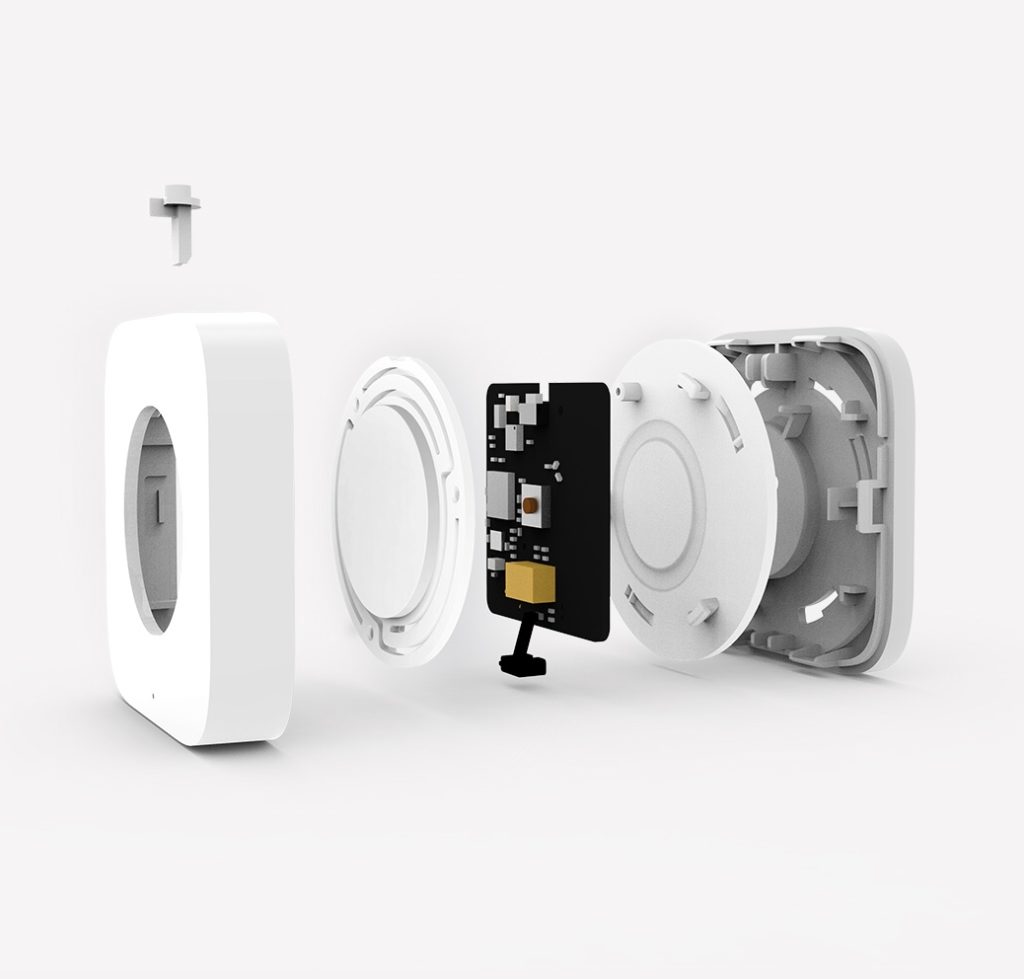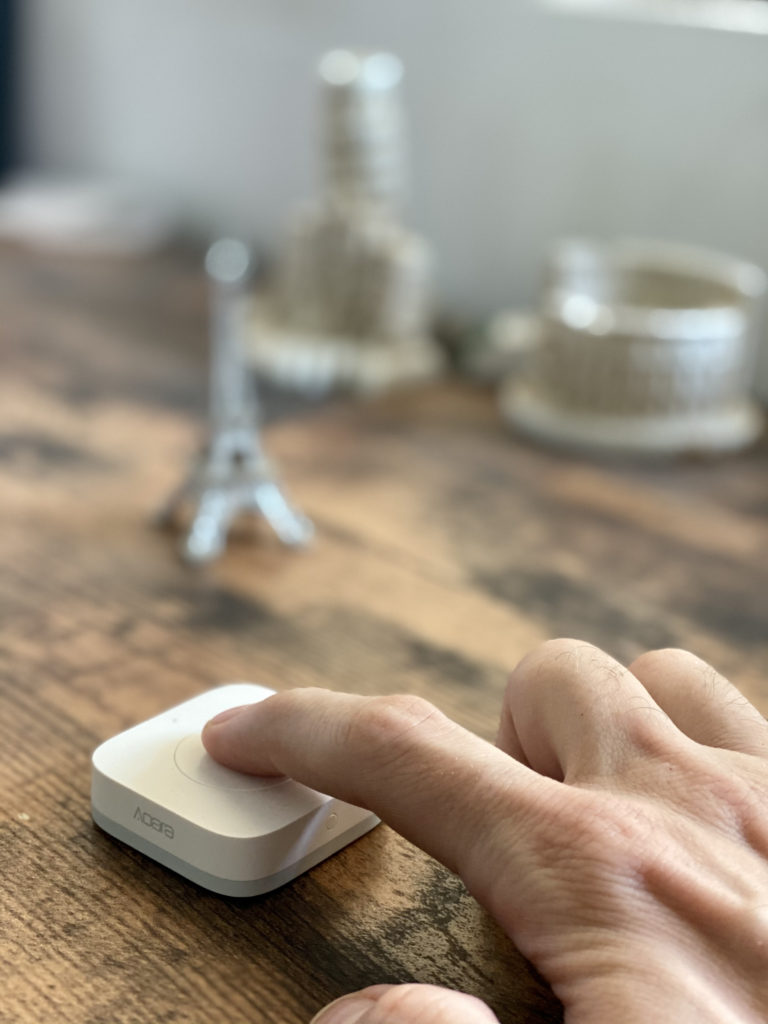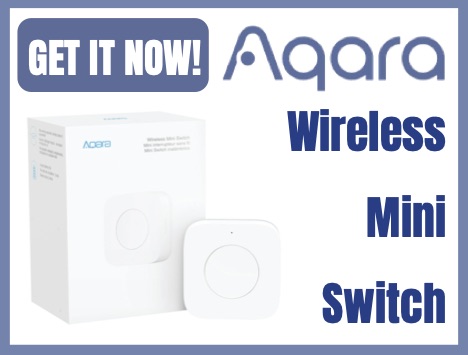I don’t know about you, but when I first started out building my smart home, I envisioned a home without switches at all. I saw a home that was controlled using motion or contact sensors or by voice. I quickly realized that this is simply impractical and denies us a fundamental way that we interact with our home. More importantly, it limits our automation and control potential. We’ve reviewed a couple of different HomeKit buttons in the past like the Hue Tap and Smart Button, but since Aqara has been making a name for themselves as of late, I thought we take a look at their HomeKit button, the Wireless Mini Switch.
Features
- Wireless Zigbee connection
- 3 programmable actions: single, double, and long presses
- Mountable with included double-sided tape
- Panic! button feature
- Doorbell feature
Need to Knows
- Requires Aqara Hub
- Up to 50,000 presses
- Dimensions: 1.77 x 1.77 x 0.47 inches
- User replaceable CR2032 battery
- Operating Temp. -10℃ – 55°C / 14℉ – 131℉
- Operating Humidity: 0 – 95% RH, non-condensing
Pros
This HomeKit button has an extremely simple design that really can blend into just about any decor. Its low profile and diminished footprint allow it to do its job without being obtrusive or gaudy. While I may have preferred a circular frame rather than the rounded-corner square Aqara went with this company has managed to create a simple, yet practical smart home controller that isn’t an eyesore.
In terms of connectivity for buttons in HomeKit, we essentially have Bluetooth and a proprietary technology like Zigbee that connects to the internet. While I won’t go into the merits of each here, suffice it to say that they both have a place in the smart home. For me, buttons should carry out their assigned action with as little latency as possible. Though the differences really are marginal, I do seem to have better reaction times from a device using Zigbee over Bluetooth. The Wireless Mini Switch communicates with the hub using Zigbee so I see this as a plus.
Speaking of communicating with the hub over Zigbee, the Wireless Mini Switch has a couple of capabilities that other HomeKit buttons do not. As mentioned above, we can use the button to act as a doorbell by assigning a doorbell chime to one of its actions in the Aqara app. Secondly as we expounded upon recently, we can use the Wireless Mini Switch with the Aqara Hub to build a panic button. Sure, you can create versions of this with other HomeKit buttons, but I like seeing it baked right in.
Cons
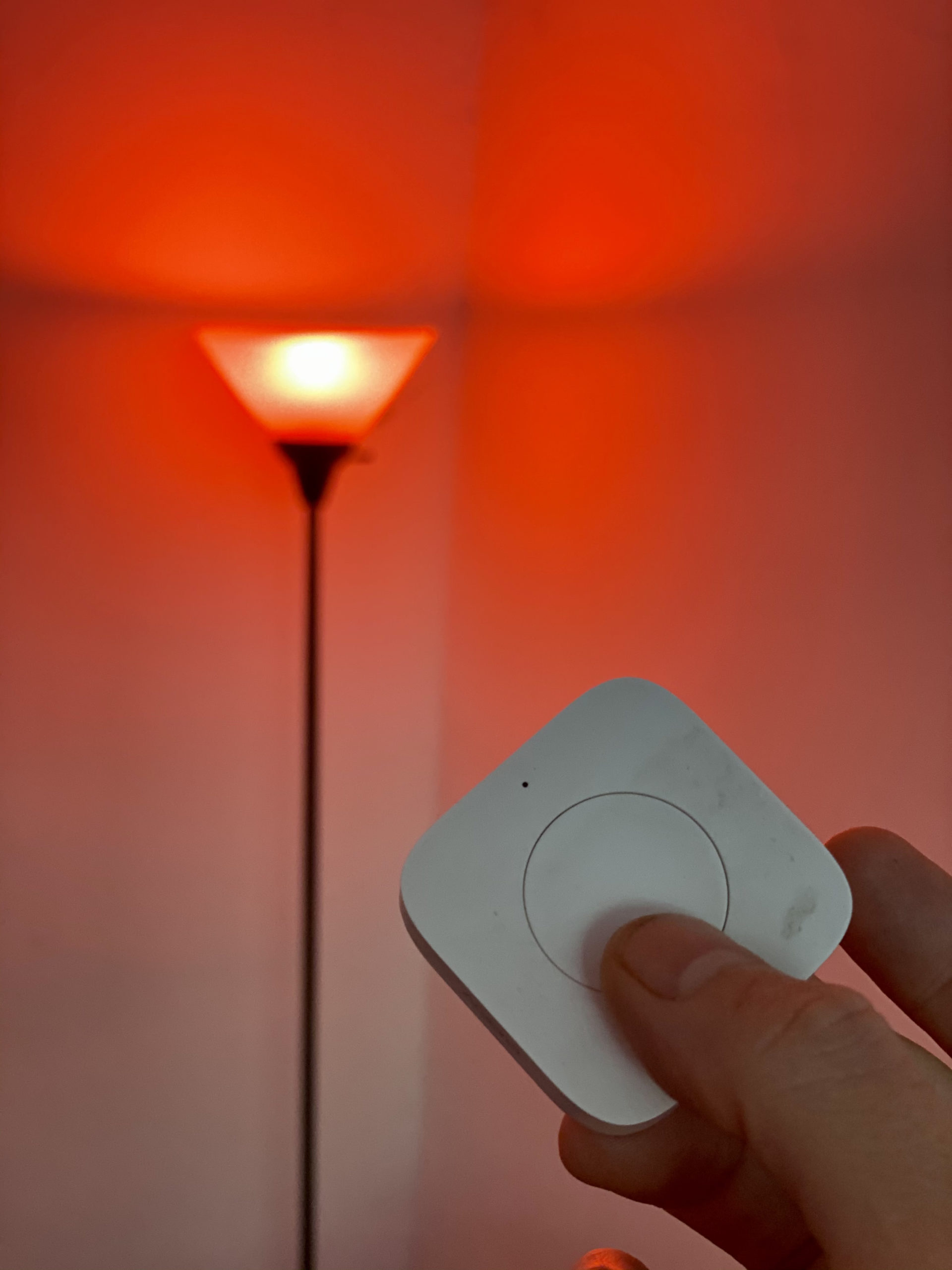
We touched on Bluetooth vs. proprietary protocols earlier and one of the major downsides with proprietary smart home languages is that they often require a hub to translate the signals to something that the internet understands. So yes, the Wireless Mini Switch does have the added cost of a hub, but regardless of which hub you choose you get a ton of added functionality like an alarm or even a HomeKit Secure Video camera, so this is almost a moot point. Additionally, the Aqara hub connects using WiFi and doesn’t eat up an ethernet port on your router or switch.
The Wireless Mini Switch has ridiculous operating temperature and humidity ranges making it great for all sorts of applications. This being said it does not have an IP rating. This essentially means there is no specific protection against dust or liquid intrusion. This is something I would have liked to see with this HomeKit button, especially considering its doorbell functionality.
Lastly, the Wireless Mini Switch has an LED indicator just below the surface of the face of the button which is used to indicate that it is in pairing mode. However, it would be nice to have this LED flash when the button is pressed as well, just as an added visual cue that something is happening.
The Apps
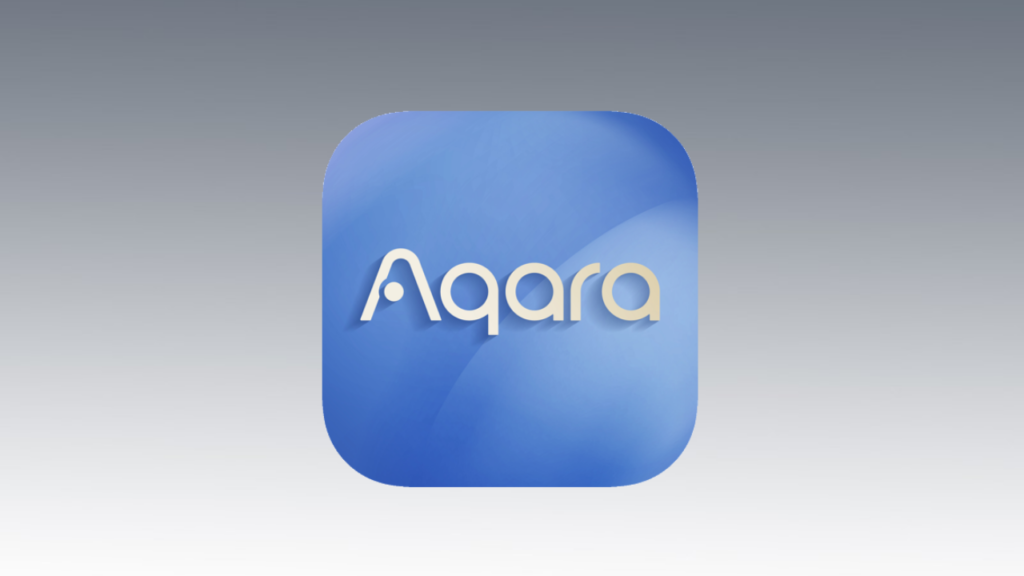
In Aqara’s Home app, we can program 3 different actions: single, double, and long presses. These can trigger any number of actions from turning on a smart plug to sending push notifications to playing sounds and flashing lights on the Aqara Hub. This is where your doorbell and panic buttons come into play. Another really interesting feature that I’ve not seen with other HomeKit buttons that I’ve reviewed is a log of the date and time that the button was pressed. The log also indicates which type of press was used. This could definitely come in handy if you’re trying to track a package with the doorbell function or see when your panic button may have been triggered.
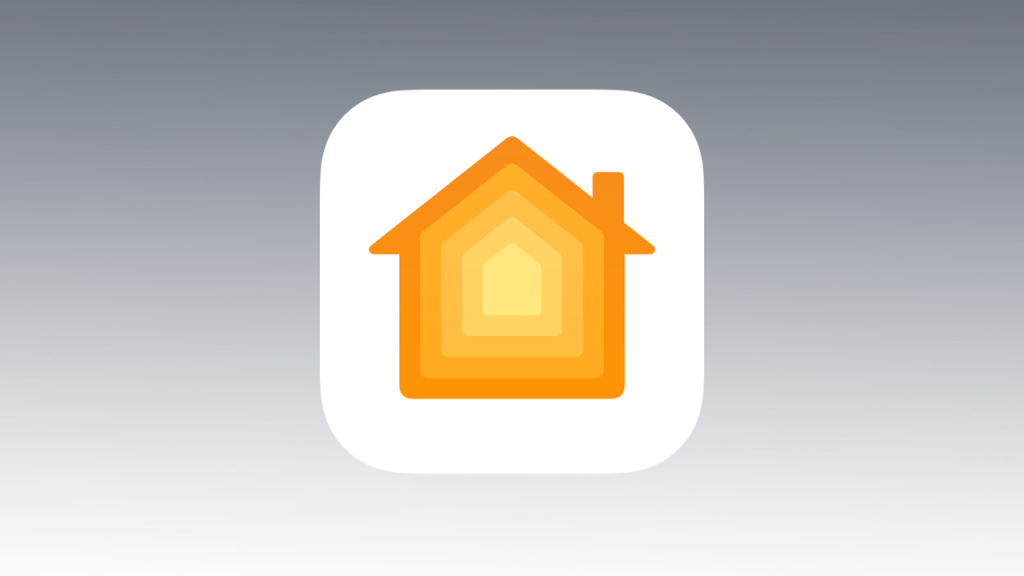
For us HomeKit users, the Wireless Mini Switch shows its true colors once we start using it with other HomeKit accessories. We have the same number of actions that are available in the Aqara app, however we can assign any number of HomeKit accessory services to those actions. Furthermore as with other HomeKit buttons, we can use conditions to create toggles or even cycle through different accessory actions using the same button press. We walk you through how to set that up in this article. It’s really useful for getting the most out of your HomeKit button.
Final Thoughts
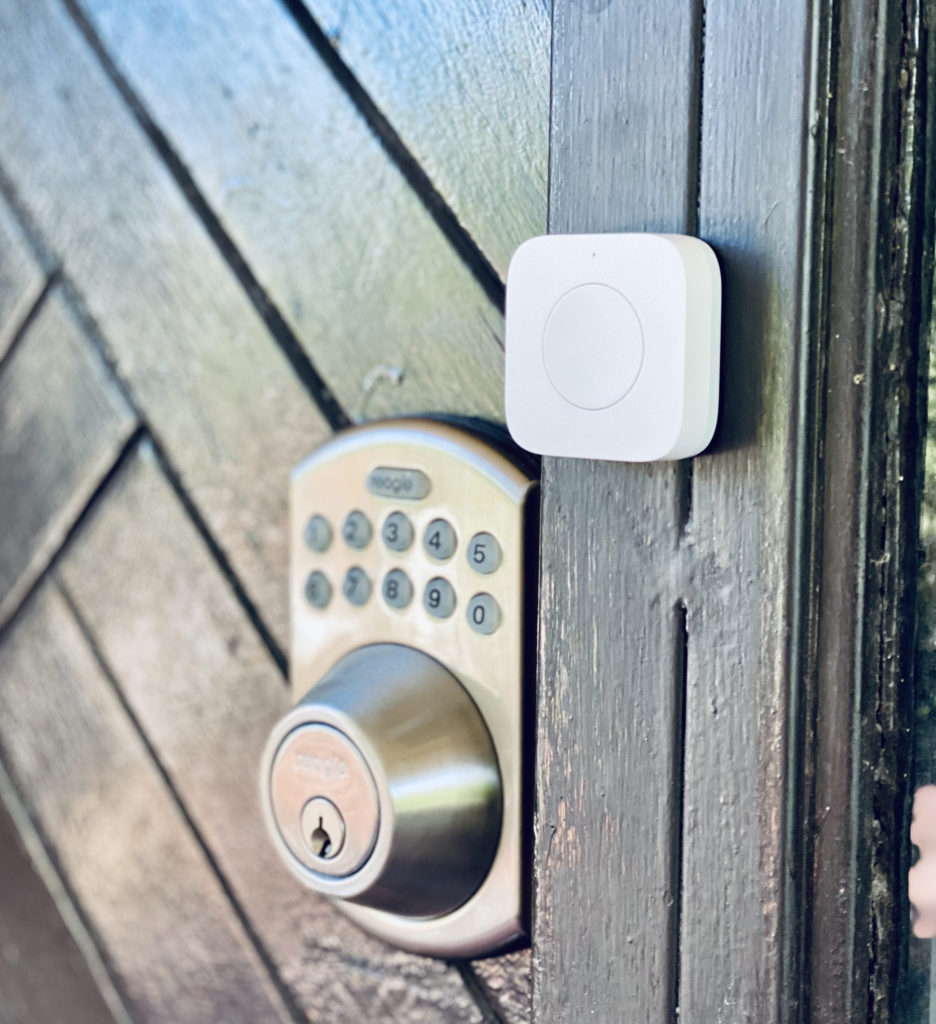
HomeKit buttons are such a versatile tool in our smart home arsenal. They give us a range of flexibility to control lighting, fans, purifiers, or even scenes. They can also act as replacement light switches when you can’t, or don’t want to, deal with wiring. The compact, minimalist design of the Aqara Wireless Mini Switch makes it a great option for attaching to just about any surface and even inconspicuously if you so desire. It’s also nice to have a tiny smart home controller that you can carry with you around the house. Finally, we can’t ignore the very accessible price of this HomeKit button. Much like a lot of Aqara’s smart home accessories, the Wireless Mini Switch isn’t flashy, but it can literally unlock a TON of smart home possibilities.
For more information on the Wireless Mini Switch and Aqara’s full lineup of HomeKit-compatible smart home gadgetry, check out http://aqara.com
We use income-earning affiliate links.
We may receive a small commission on purchases made using links on this page at no extra cost to you.
